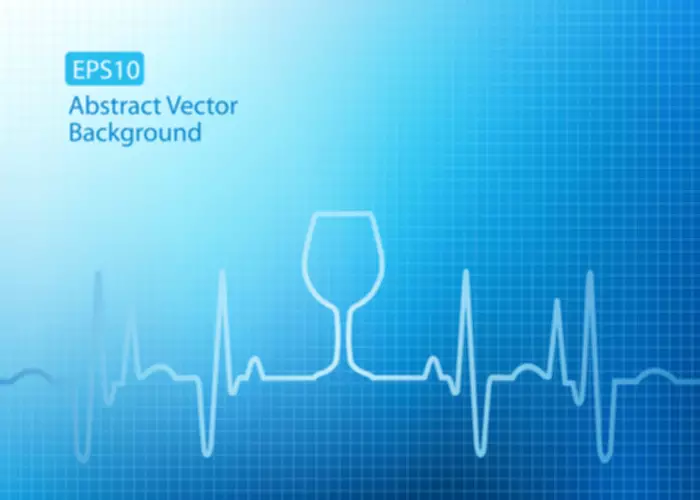If you drink the same amount you were used to during active addiction, you may experience extreme intoxication or alcohol poisoning. As your body gets used to alcohol, you will need more and more of it over time, which is called tolerance. If you continue to drink, your body will come to rely on alcohol to maintain its chemical balance. As your body adapts to alcohol, it will change its natural chemical balance to include alcohol. Quitting will cause your body’s chemical balance to be thrown off suddenly, leading to withdrawal symptoms. Support groups such as Alcoholics Anonymous (AA) or sober living houses can help you get connected with peers who are going through the same journey as you are.
- We believe everyone deserves access to accurate, unbiased information about mental health and addiction.
- So, if you normally have 6 beers a day, you could be done tapering within one week.
- As such, there is only limited guidance available about the best ways to taper.
- Whether you’re a daily imbiber, heavy drinker, or frequent binge drinker, you’re likely to experience withdrawal symptoms when you quit.
What Does It Mean to Taper or Wean off Alcohol?
This can trigger alcohol withdrawal symptoms, which can be dangerous in some cases. Quitting cold turkey is the preferred method of withdrawal, but only if done under medical supervision, where symptoms can be treated as they occur. Alcohol withdrawal symptoms can start as early as 6 hours after the last drink and can range from mild to severe, depending on the amount and duration of alcohol consumption. Only about 5% of people with alcohol withdrawal experience delirium tremens. Gradual reduction strategies include slowly decreasing the amount of alcohol consumed over time and extending the time between drinks. Both methods allow the body to adjust gradually and reduce overall alcohol intake.
Is tapering off alcohol safe and effective?
If you’ve decided to taper off alcohol, you’ll need to be prepared with some strategies to make the process easier. You’ll likely face the urge to drink more than you’ve planned each day, but there are some good tricks to help you delay that next serving and keep yourself honest. Weaning off alcohol gives your body chemistry a chance to adjust, reducing the shock to your system. It also lets you start working new habits and routines into your day to replace drinking, starting the transition.

Consult a Medical Professional
A ranch-style rehab providing personalized treatment plans, evidence-based therapies, and a holistic approach to addiction treatment. A luxury center treating addiction and co-occurring mental health with evidence-based therapies, a continuum of care in bespoke facilities, and private bedrooms. Central nervous system depressants are a class of drugs that includes several prescription medications like benzodiazepines, barbiturates, and sedative-hypnotics. Depressants are so-called because they depress activity in the central nervous system.
- For those who drink more than 20 drinks a day, the tapering schedule becomes more complex and may require a different approach.
- It is only advisable to direct taper if the preferred drink is beer with a low alcohol percentage.
- Direct tapers are better if you prefer drinks that contain a low percentage of alcohol.
- This method works best with gradual reduction, as alcohol withdrawal symptoms can start within 12–24 hours after stopping drinking.
- Switching to beer from hard liquor is safer because it is easier to control the amount of beer that is consumed and is harder to binge drink.
- Tapering down also increases the likelihood that the individual will achieve sobriety.
Outpatient Meth Treatment Solutions in Scranton PA
The symptoms can range from mild to severe, with the most severe being life-threatening. Despite the potential effectiveness of tapering off alcohol, the complexities involved http://lovelylife.in.ua/eksperty-v-mire-mogyt-vvesti-pasporta-privityh-ot-koronavirysa in this process make it crucial to seek professional guidance. This approach not only ensures safety but also promotes a more successful outcome. Explore how to wean yourself off alcohol safely, from tapering plans to handling severe symptoms. Sunshine Behavioral Health strives to help people who are facing substance abuse, addiction, mental health disorders, or a combination of these conditions. It does this by providing compassionate care and evidence-based content that addresses health, treatment, and recovery.

So, if you normally have 6 beers a day, you could be done tapering within one week. It’s always best to consult a physician on the best strategy, especially if you drink heavily. Some people are facing problems with their health or personal lives which require them to quit immediately. However, for many people with alcohol use disorder, tapering off alcohol is a far better experience than quitting abruptly.
Rehab Resources
- It’s vital to speak with a medical professional before you begin weaning off alcohol to ensure you have a plan to do so safely.
- It is important in curbing the effects of anxiety and vigilance when it’s time for you to get some rest.
- Getting curious about a life without alcohol is already an incredible step, and a healthier lifestyle is within reach.
The symptoms of alcohol withdrawal can be more than enough to drive people back to drinking to find relief. Quitting any addictive substance can be extremely difficult, but quitting http://motoking.ru/blog/show/44/Vykhlopnaya_sistema_ot_Akrapovic alcohol is often especially so. Many people fail to successfully quit drinking at least once before managing to attain sobriety. If you’ve confirmed it is safe for you to wean off alcohol at home, set goals for yourself and make a plan as to how you will achieve those goals.

It’s a good idea to talk with a medical professional before you begin a taper. They can help you decide if it’s the safest way to start your recovery, and they can help you make a taper plan. It can also be a good idea for people http://oblepiha.com/calorie/fruits/1000-sok-greypfruta-konservirovannyy-podslaschennyy.html who don’t want to, or can’t, attend any type of full detoxification program. Alcohol withdrawal is a potentially serious complication of alcohol use disorder. It’s important to get medical help even if you have mild symptoms of withdrawal, as it’s difficult to predict in the beginning how much worse the symptoms could get. The main ways to prevent alcohol withdrawal are to avoid alcohol altogether or to get professional help as soon as possible if you think you’re developing alcohol use disorder.





